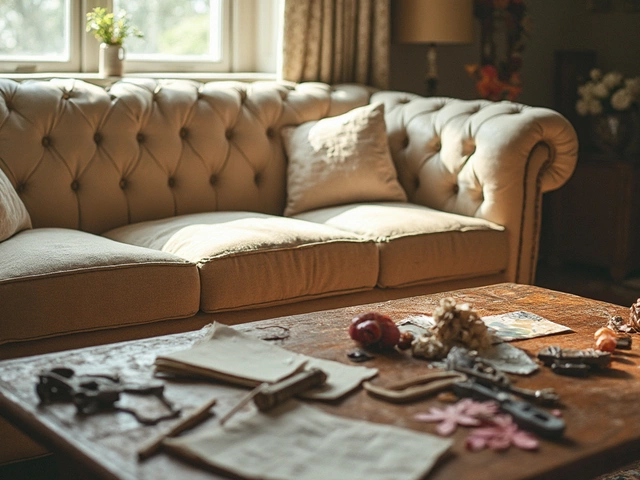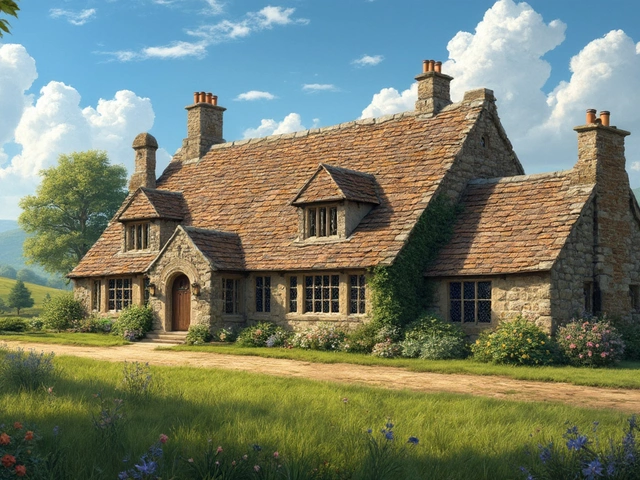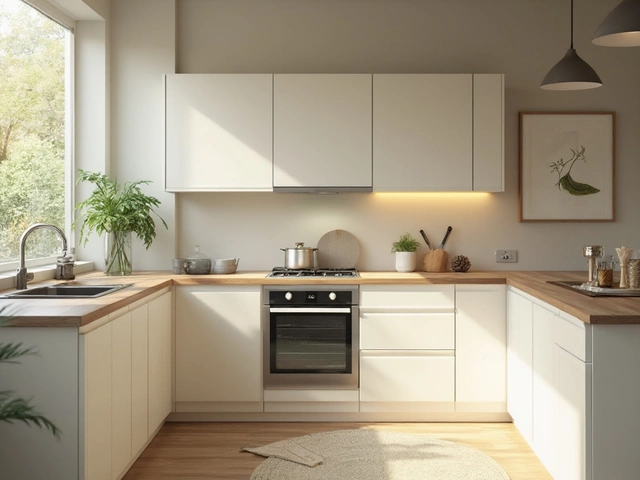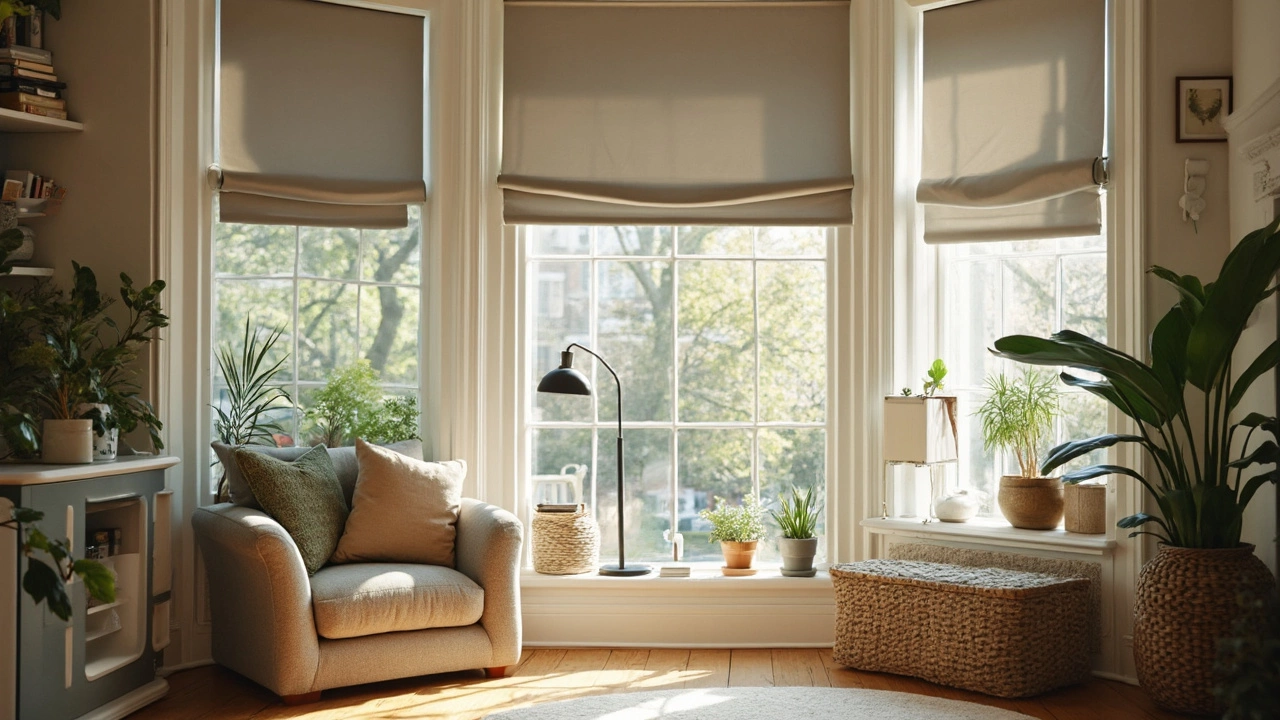
Big windows can either make a room feel bright and amazing, or turn it into a total fishbowl. Not everyone loves the look (or hassle) of giant curtains. So, how do you keep your privacy and block the heat or glare from a large window without feeling like you live in a showroom?
You’ve actually got a bunch of options besides the classic curtain rod. Think sleek blinds that open with a button, sticky frosted film that goes on in five minutes, or even big sliding panels that you can park where you want. There’s no need to sacrifice light or style just because you’ve got a giant pane of glass staring back at you.
Ready to cover that big window? Let’s break down what works, what actually looks good, and what you’ll be thankful for when the sun’s blazing or nosy neighbors walk by. Whether you rent or own, or just refuse to wrestle with more fabric, these ideas could finally solve your big-window problem.
- Why Skip Curtains on Big Windows?
- Blinds Built for Size
- Frosted and Decorative Glass
- Cool Ways to Use Screens and Panels
- DIY Tricks for Privacy
- Picking What Actually Works for You
Why Skip Curtains on Big Windows?
Curtains can make big windows look even heavier, which isn't always the vibe people want. Plus, managing those massive slabs of fabric is a workout nobody signed up for. If you're a parent like me, nothing says 'stress' like a kid pulling on giant curtains or getting tangled up.
One real headache? Cleaning. Regular curtains on wide windows gather dust like magnets, and washing them takes up the whole laundry day. And don’t even talk about the cost. The bigger your window, the pricier those custom curtains get—no joke, large custom drapes can cost over $1,000 for one window.
Here’s a look at some quick facts about curtains on large windows compared to other options:
| Option | Average Maintenance | Estimated Cost (Large Window) | Light Control |
|---|---|---|---|
| Curtains | High (dust, washing) | $500 - $1,500 | Good, but blocks whole window |
| Blinds/Shades | Low (wipe clean) | $200 - $800 | Adjustable |
| Window Film | Very low | $30 - $100 | Let’s light through |
| Panels/Screens | Low | $150 - $600 | Customizable |
The other big deal: light. Curtains block out everything when they're closed, which isn’t always great. Sometimes you just want to mute the glare, not turn the place into a cave. That’s where alternatives shine. Things like blinds or window film let you adjust the vibe all day, whether you want Netflix darkness or a soft morning glow.
So yeah, skipping curtains on a big window isn’t just about looks. It’s about saving money, making life easier, and actually enjoying all that glass instead of fighting with fabric.
Blinds Built for Size
If you want something sleeker than curtains, oversized blinds should be your first stop. Big windows need coverings that don’t sag or look flimsy, and a lot of brands make “oversized” or “panel track” blinds just for huge windows. Roller blinds, cellular shades, and vertical blinds all come in wide and tall sizes. Some even span up to 15 feet wide, no joke.
The big plus? Modern blinds basically vanish when you roll or stack them up, so you keep the window’s big view. You can also control the amount of light and privacy by tilting, stacking, or partially opening them. Automated versions are super popular now. If you’ve ever wanted to open the big window without getting out of bed, it’s honestly life-changing. Many work with Alexa or Google Home, or even on a schedule. This makes them perfect for hard-to-reach windows.
Here’s a quick comparison of popular options for big windows:
| Type | Max Size (Width x Height) | Light Control | Price Range (USD) | Best For |
|---|---|---|---|---|
| Roller Blinds | 144" x 144" | Full/Partial | $80 - $800 | Modern look, blackout options |
| Vertical Blinds | 192" x 120" | Adjustable | $60 - $1,200 | Patio doors, wide sliders |
| Cellular Shades | 144" x 120" | Filtered/Blackout | $120 - $1,500 | Energy efficiency, insulation |
| Panel Track Blinds | 192" x 144" | Partial | $200 - $2,500 | Huge windows, sliding doors |
Panel track blinds are one of my top picks for super-wide windows. They run along a top rail and slide left/right, kind of like giant vertical blinds but with solid fabric panels. They’re easy to use and you can play with materials—think woven bamboo, blackout fabric, or even prints if you want some color.
If your window is especially sunny, go for cellular shades. These trap air in little pockets, which actually lower energy bills—up to 20% savings on heating and cooling, according to the U.S. Department of Energy. Roller shades are also solid for a minimal, no-fuss vibe, and are easy to motorize for those tall windows that are a pain to reach.
One quick tip: always measure your window more than once before buying blinds, and check if your frame supports the weight. Installing extra-wide blinds isn’t a one-person job, so bribe a friend or ask for professional install. Custom sizes are usually worth it for a clean look, especially if you want smart controls or blackout features. No more fighting curtains that weigh a ton or drag on the floor—blinds are built for this job.
Frosted and Decorative Glass
If curtains aren’t your thing and you want your big window to block prying eyes without making the room dark, frosted or decorative glass is actually pretty brilliant. It stops people from seeing in, but still lets natural light stream through. You’ll spot this look in everything from bathrooms to trendy front doors.
You don’t need to rip out your window, either. There’s peel-and-stick frosted film that you can cut to size and put on in a morning. It’s renter-friendly and peels off with zero damage. Want something a bit fancier? Look for films with fun patterns, geometric designs, or even a stained glass effect. Home improvement stores and websites like Etsy and Amazon have thousands of options. Fiona and I once used a hexagonal pattern film for our laundry room window, and it took the space from awkward to cool in about ten minutes (Gideon helped stick on the last square—totally crooked, but we kept it!).
If you want something super permanent, pros can frost the glass for you with acid-etching or sandblasting. These methods last forever and look high-end, but they’re also more expensive. If you love DIY, you can even frost a window with spray—the kind you find at hardware stores. Tape up designs or write a message before you spray, and you’ll get a custom look.
Decorative glass isn’t just about privacy. It can actually lower glare and soften sunlight, which means no more having the full sun blast you off the couch. Plus, it’s easier to keep clean than fabric, and there are no musty odors like you get from old drapes.
"Frosted and tinted window films have exploded in popularity and are one of the easiest, affordable improvements homeowners can do in a weekend," says interior designer Sara Simms in Real Simple Magazine, March 2025.
Just make sure you measure twice before you cut and apply. If you aren’t sure how much privacy you want, try a sample first. If you change your mind, you can usually peel the film off and try a new look, no regrets. Super handy if you want to test ideas before you commit for good.
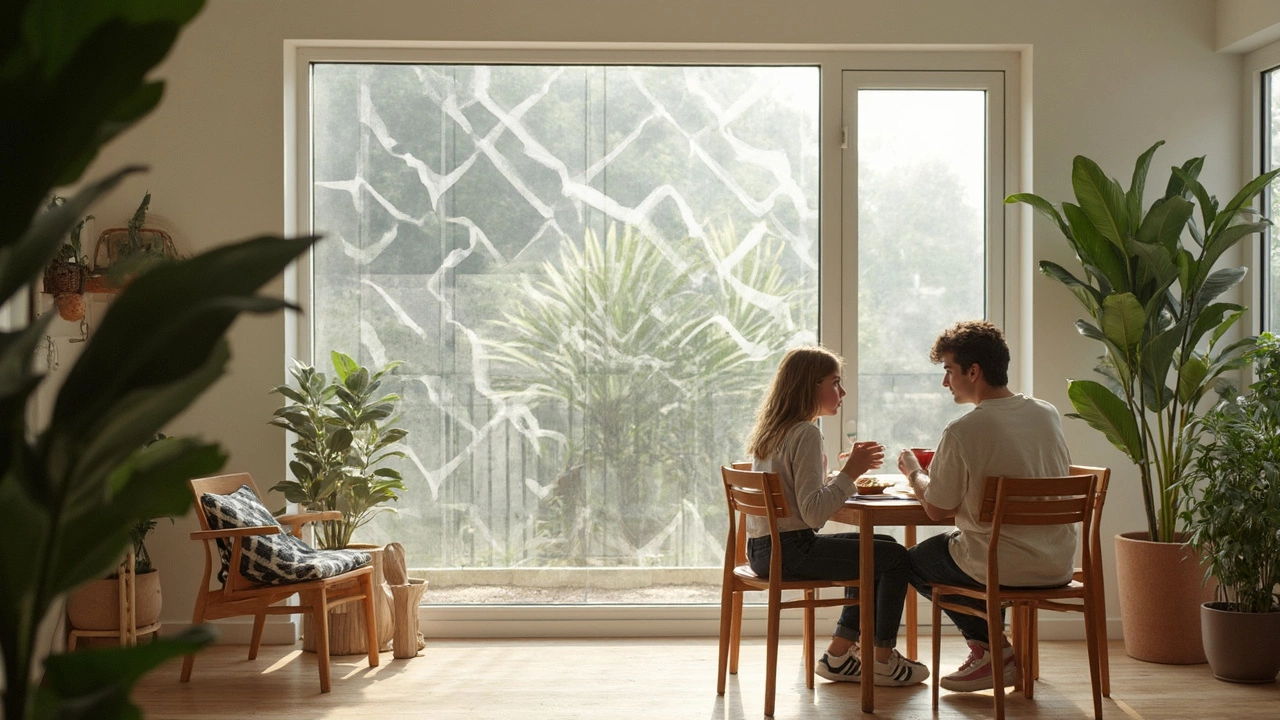
Cool Ways to Use Screens and Panels
If you’re tired of fighting with clunky rods and extra-long fabric, screens and panels are a lifesaver for covering those big windows. They come in all sorts of shapes and materials, plus, you can move them around or even fold them away when you want more sunlight. Let’s look at some good options and their perks.
- Sliding panels: These are also called panel track blinds. They’re perfect for wide windows or glass doors. The panels slide side-to-side, stacking neatly away and coming in fabric, woven wood, or even solar screen material. You can cover as much or as little as you want. Panel tracks are easy to clean—just wipe them down—and you can even find versions with blackout backing if you want dark mornings.
- Japanese-style shoji screens: If you’re after a bit of vibe, these lightweight screens use wooden frames with translucent paper. They let soft light in but keep your privacy. You can buy pre-made panels or, if you’re patient, build simple DIY shoji screens for custom sizes. A lot of people use them as room dividers but they work just as well right in front of big windows.
- DIY wood or metal screens: Handy with tools? People are making simple grid frames with legs and either leaving them open or filling them with fabric. You can paint them any color and tuck them behind the sofa or move them close for privacy. They’re not fixed in place, so you’re not marking up your windows.
- Decorative folding room dividers: These freestanding panels give you full flexibility—they fold up fast and you can drag them to different spots. Modern designs look way better than those floral ones from the ‘80s, and you’ll find materials from sturdy plastic to rattan or even printed canvas. They cover a lot of ground (or glass) in seconds.
Why are these so handy for big window problems? They take up less wall space than curtains, work well with odd window shapes, and you don’t need to drill into or damage your frames—great for anyone renting. Plus, you can update your panels or screens any time—just swap out a fabric, paint the frame, or buy a new set when you move.
If you’re wondering about light control or privacy, here’s a rough guide to what these panels/screens do best:
| Type | Privacy | Light Control | Moveability |
|---|---|---|---|
| Sliding panels | High | High (if blackout) | Fixed track, moves side-to-side |
| Shoji screens | Medium | Softens light, not blackout | Freestanding or wall hung |
| DIY screens | Medium to high (depends on fabric) | Customizable | Portable |
| Folding room dividers | Medium | Blocks direct sunlight | Freestanding & foldable |
Honestly, when my wife Fiona and I turned our playroom’s giant window into a kid-friendly zone, we used sliding fabric panels so our son Gideon could open everything up in the morning but cover most of it by naptime. We’ve liked the mix-and-match look, and it’s easy enough to swap out different styles if we want to change things up. These might not be the first thing most folks think of, but they definitely work—and just maybe they’ll even get you a compliment or two.
DIY Tricks for Privacy
Not into paying for custom blinds? You’re not stuck. There are plenty of smart DIY ways to cover up a big window and still keep it looking sharp. These ideas cost less than most store-bought options, and you won’t need special skills or tools either.
Window privacy film is a quick fix and it’s super popular in rentals. You just measure the window, cut the film, peel off the backing, and stick it right on. No one can see in, but the light still comes through. The wild part: about 73% of Amazon’s bestseller window films are under $25 and take less than 30 minutes to put up for a large window. If you mess up, just peel it off and try again. There are frosted, stained glass, and even geometric choices now.
If you want something softer, fabric panels aren’t just for sewing nerds. Grab tension rods and hang lightweight cotton or linen yardage top and bottom—your own DIY café look. It’s a trick I picked up from a friend who renovated bungalows, and it works for those weird wide windows where regular rods sag.
For renters: removable window shades (like those paper accordion ones) work in a pinch. Press them at the top, trim the bottom, done. They block just enough but are easy to take down when you move.
- Stick-on window film: Buy pre-cut rolls or sheets, stick directly to glass for instant privacy. Great for bathrooms, street-level living spaces, or anywhere you need some cover.
- Sheer fabric panels: Thread the fabric onto spring-tension rods, place at the height you want, and swap out colors by season if you feel like it.
- DIY hanging screens: Got some creativity? Cut plywood, MDF, or even thick cardboard, paint or cover with peel-and-stick wallpaper, and lean against the window. Works best for big, unused panes.
- Plant wall: Pick up big leafy plants and line them on your windowsill or a long bench in front of the window. You get privacy, better air, and actual life in the room.
- Pegboard cover: If you want something trendier, a painted pegboard can be attached inside the window frame. Hang little plants, baskets, or even string lights off it.
If you’re wondering how these compare on price or setup time, here’s a simple table as a cheat sheet:
| DIY Option | Cost per Large Window | Time to Install | Privacy |
|---|---|---|---|
| Stick-on Film | $20-$35 | 30 min | High (can’t see in at all) |
| Sheer Fabric Panels | $20-$50 | 20 min | Medium (lets a little in/out) |
| Removable Paper Shades | $10-$30 | 10 min | Medium |
| DIY Plant Wall | $40-$100* | Varies | Medium to High (depends on plant size) |
| Pegboard Cover | $25-$60 | 1 hr | Medium |
*Depends on if you already have pots and plants.
If the window gets a ton of sunlight, don’t forget UV-blocking film or double up the privacy layer, since glare can sneak around even creative covers. Tinker a little and you’ll find something that fits your style. Plus, it’s kind of fun to get your hands dirty and see what works best with your space.
Picking What Actually Works for You
Let’s be real—there’s no single answer for everyone. Your best move really depends on a few things: how much privacy you need, what style you want, your budget, and how much sunlight hits your space. It's also smart to check if your window faces the street, backyard, or neighbors. Each choice comes with some tradeoffs, so here's how to decide what fits your vibe and life.
First up, nobody wants to put in a bunch of effort (or money) on something that just doesn’t get the job done. Need daily privacy from street traffic? Something like frosted window film or thick panel blinds is a solid call. Want the light but hate the glare? Solar shades block UV rays but keep things feeling open. Living in a rental? Look for non-permanent fixes like removable films or tension rod shades—landlords can't argue with those.
Before you jump in, measure your window—width and height—down to the millimeter if you can. Big windows often cost more to cover, so knowing the size keeps you from underordering or wasting cash. Most big-box stores cut blinds to size, and custom options aren’t always more expensive than you’d think. Check this sample data from a 2024 U.S. interiors survey on average costs:
| Window Covering Type | Average Cost (per sq. ft.) | Best For |
|---|---|---|
| Cellular Shades | $2.50-$6.00 | Energy savings, privacy |
| Sliding Panel Track Blinds | $4.00-$9.00 | Modern looks, large windows |
| Frosted Film | $1.00-$2.00 | Rentals, fast privacy |
| Solar Shades | $3.50-$7.00 | Blocking harsh sunlight |
| DIY Wood Screens | $2.00-$5.00 | Custom style, hands-on |
If you’re after a hands-off, clean look, blinds or solar shades keep your big window sleek and adjustable. For my own home, Fiona and I landed on wide vertical panels because our son Gideon likes pulling cords—and these don’t have any. If you don’t mind some weekend effort, DIY wooden frames with fabric or Ikea-style rice paper can save money and get the exact style you want.
Think about cleaning, too. Something that gathers dust is a drag—panels and shades are easier to wipe. If you have pets or kids, avoid anything with dangling bits that break or tangle (it’s not just annoying, those cords are a safety risk). Want a window covering that lets you see the outdoors without feeling exposed? Solar shades keep things private in the daytime without blocking your view.
Here’s a quick tip: When you pick your cover, test a sample first—stick a bit of film or hang a panel for a couple of days. You’ll know fast if it’s too dark, not private, or if the color clashes. Big windows are awesome, but only if the solution you pick actually holds up to your daily life. Focus on what you really need from your big window, and it’ll feel like a smart move every time you look out—without ever missing those heavy drapes.
